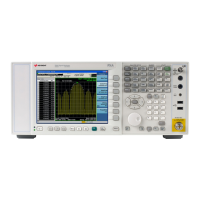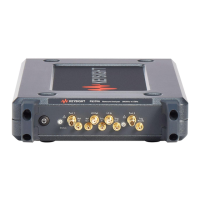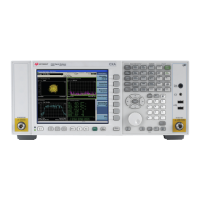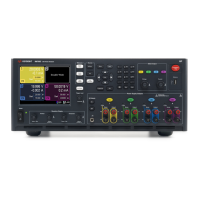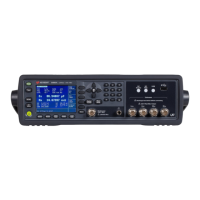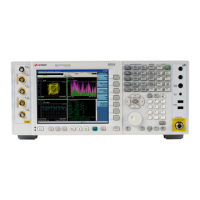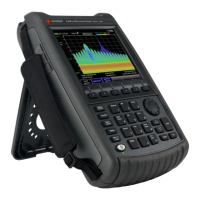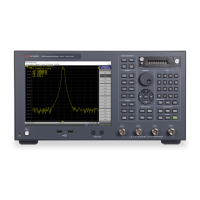Averaging on an 8510 is similar to the IF BW ltering of the PNA, both are like a DSP
lter. The IF BW of the PNA is similar to point averaging on the 8510. Increasing the
averaging factor of the 8510 reduces the noise level. Each point on an 8510 receives the
same weight in the averaging function. The IF BW on a PNA reduces noise in the same
way. The 8510 uses either point or trace averaging depending on many factors including
the hardware and software setup. On the PNA, you always want to use IF BW reduction
instead of trace averaging because it is faster.
It is difcult to easily see how PNA IF BW and 8510 averaging are the same. It is espe-
cially difcult to see because the 8510 dynamic range performance rolls off quicker than
the PNA and the 8510 and PNA dene specs differently; noise oor on 8510 is specied
as peak noise; on PNA it is specied as RMS noise oor. The difference is 10.4 dB. So you
have to improve the 8510 noise oor by 10.4 dB to compare it to PNA values. It is easiest
to simply measure and adjust.
There are two steps in determining the equivalent PNA IF BW:
1. Measure 8510 noise level
2. Determine Equivalent PNA IF BW
(Adjust PNA IF BW to match 8510 noise level)
1. Measure 8510 noise level
a. Set 8510 up for desired measurement.
b. Turn calibration off.
c. Place marker at desired point.
d. Select log mag.
e. Set center frequency = marker.
f. Set span to 0 Hz.
g. Set 801 points.
h. Turn smoothing off.
i. Place reference in center of screen.
j. Set reference value = marker.
k. Select single sweep. Continue when sweep is complete.
l. Adjust reference value until noise envelope is centered on screen.
m. Adjust scale until noise spreads across 6 grid lines.
– Three noise spikes should pass through either grid 2 or 8
– Scale (roughly) equals rms trace noise:
– TN = scale:____;____;____;____;____ ; Average TN = ____
– Repeat from step k. at least three times. Average result above.
2. Determine equivalent PNA IF BW
a. ..........................................................Set PNA up for desired measurement.
b. ........................................................................................ Turn calibration off.
c. .......................................................................Place marker at desired point.
d. ...............................................................................................Select log mag.
e. ..................................................................... Set center frequency = marker.
f. ............................................................................................. Set span to 0 Hz.
g. ................................................................................................Set 801 points.
h. ..................................................................................Turn trace statistics on.
i. ...............................................Read rms noise (Std. Dev.) from marker data.
j. ....................................................................................Adjust PNA IF BW until
Std. Dev. = Average TN (from step 1m).
Appendix 2: How to select PNA Series (PNA/ PNA-X)
IF BW with performance comparable to 8510
78 | Keysight | Antenna Test – Selection Guide
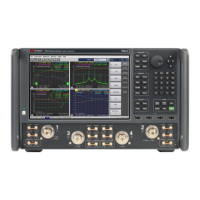
